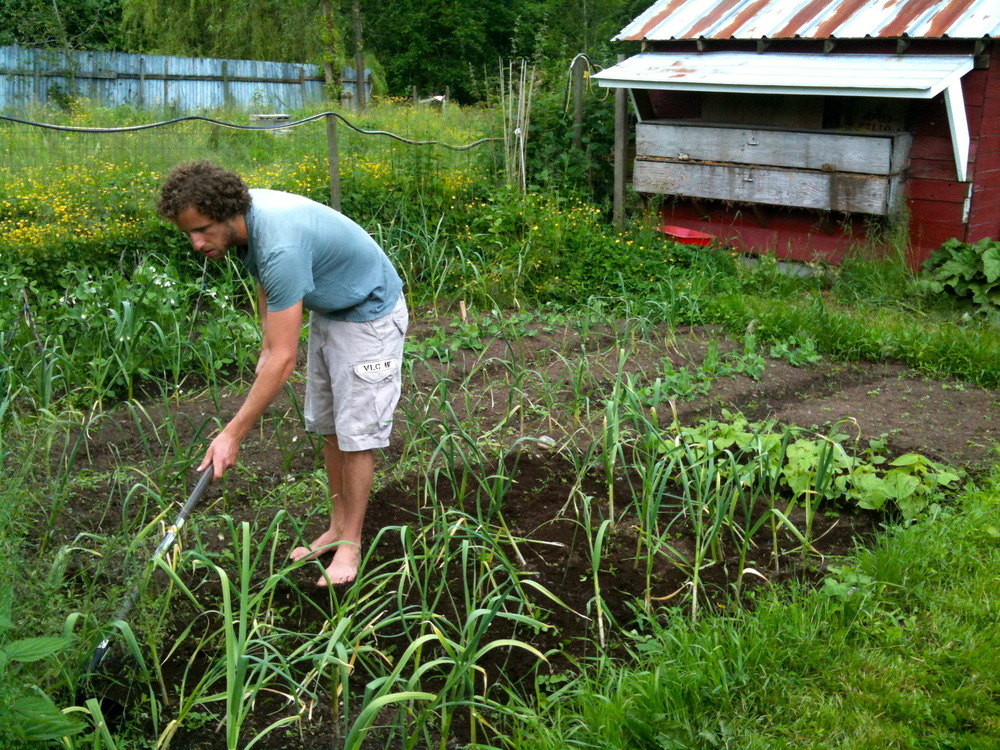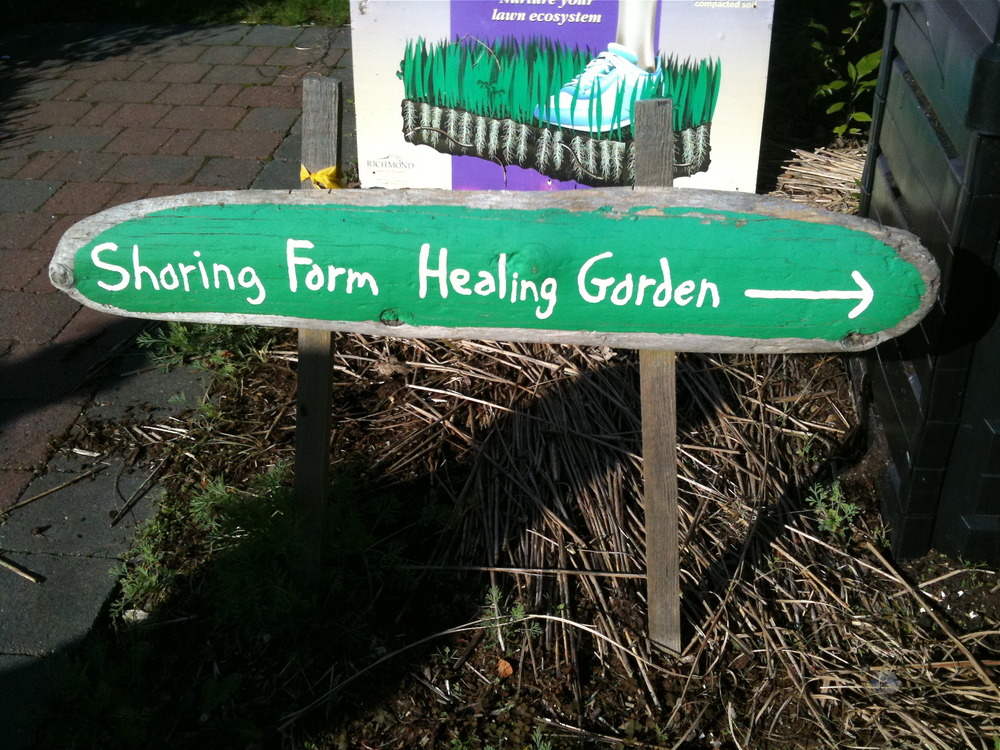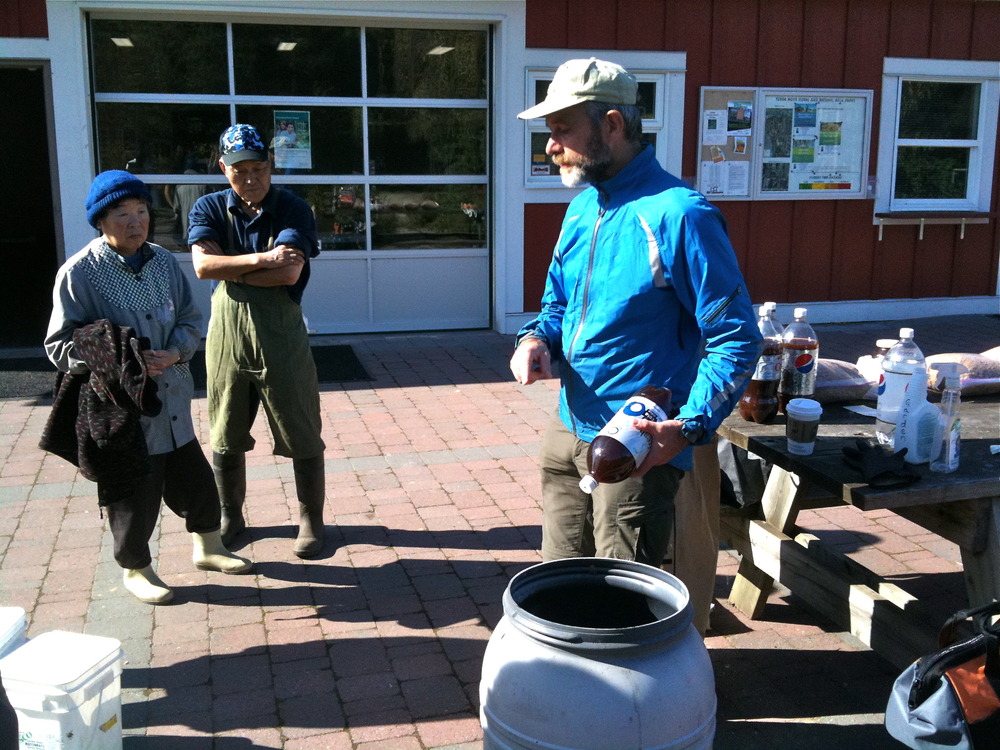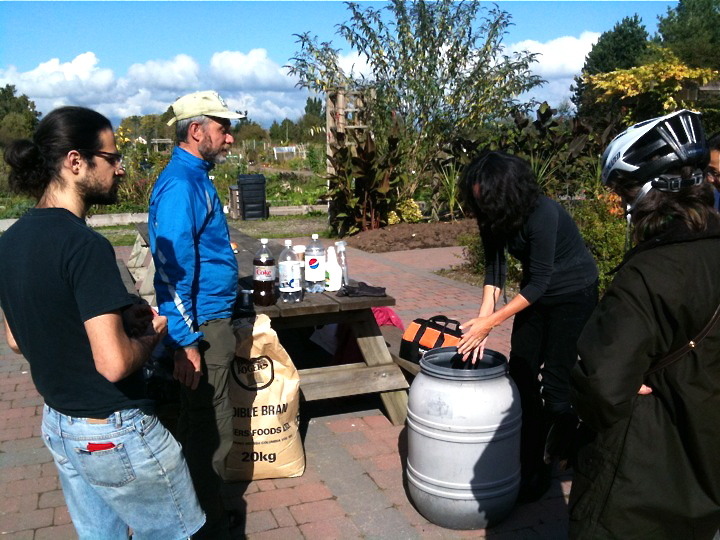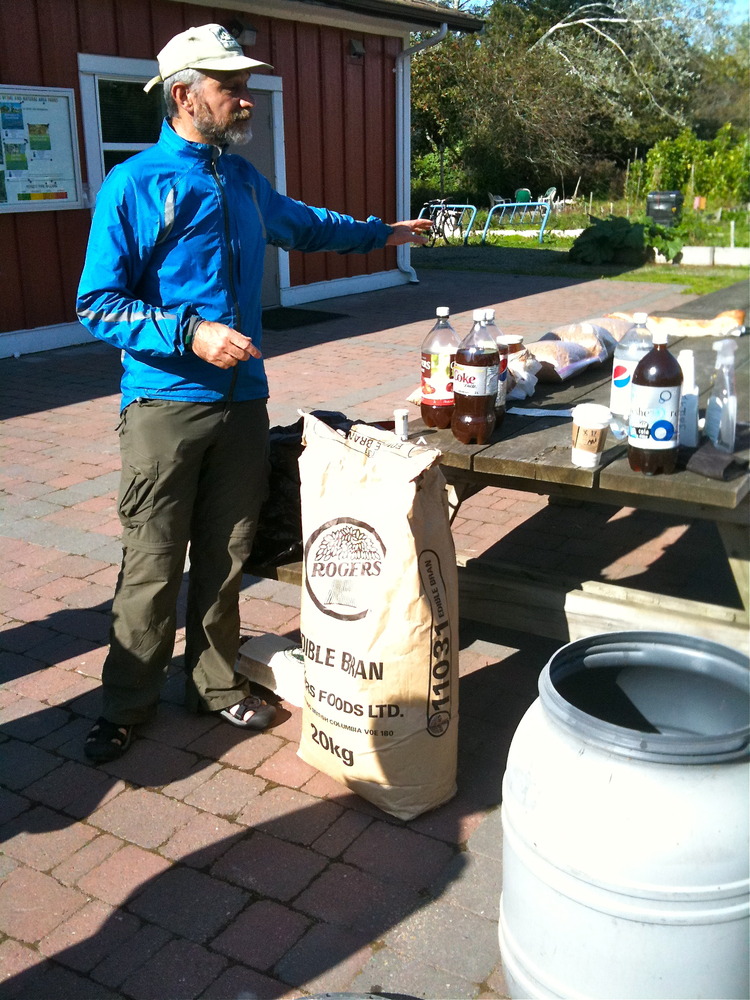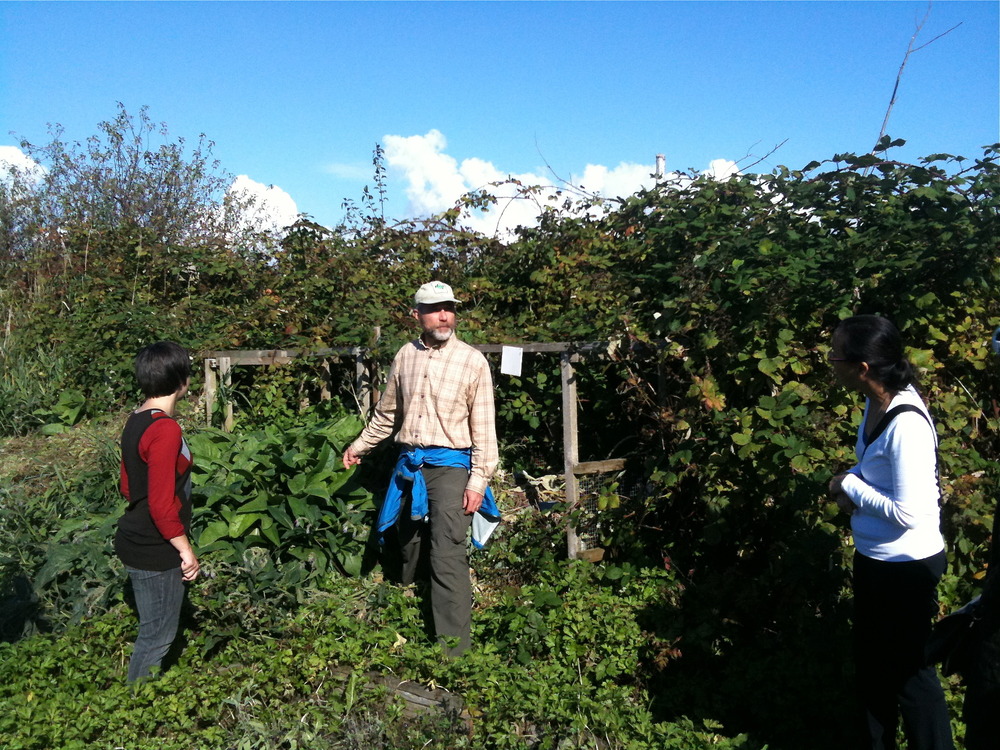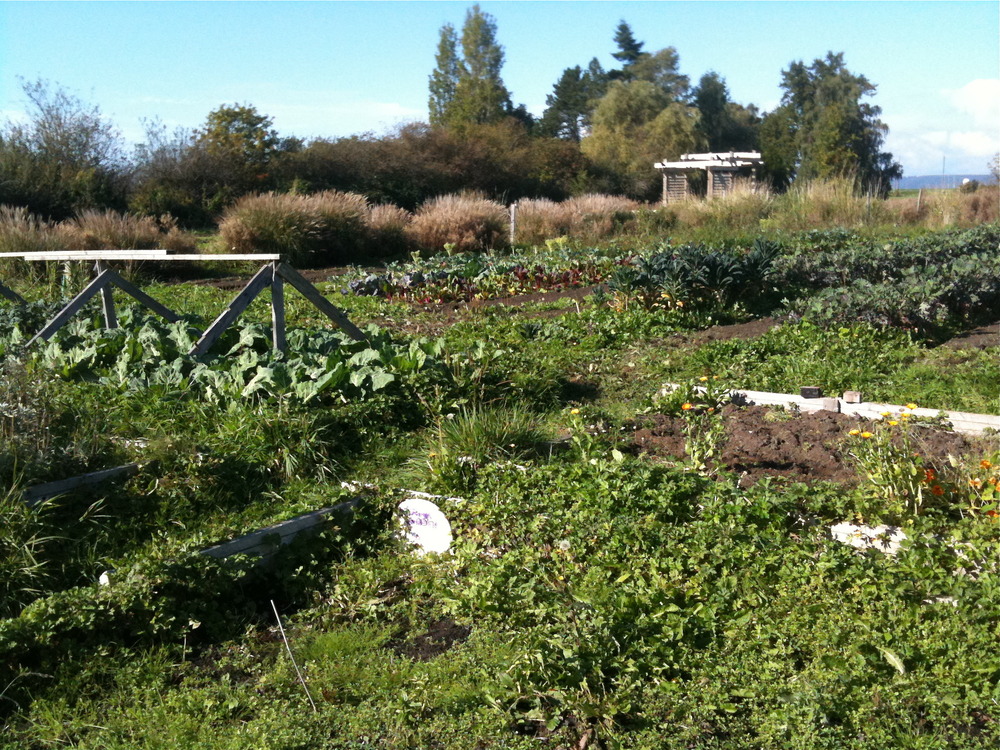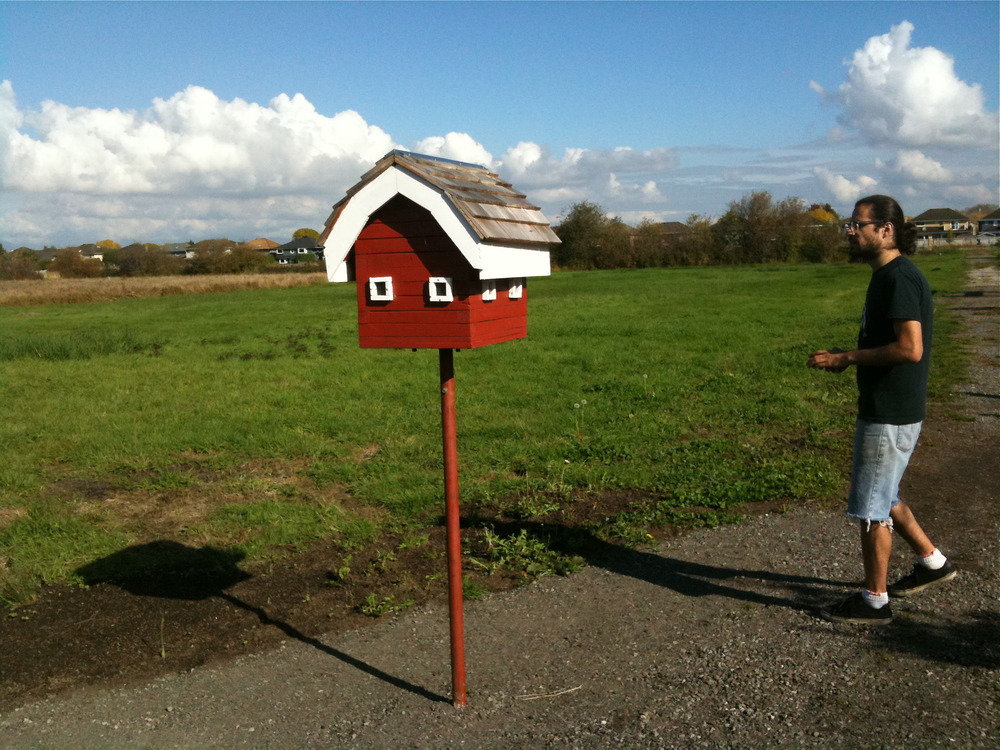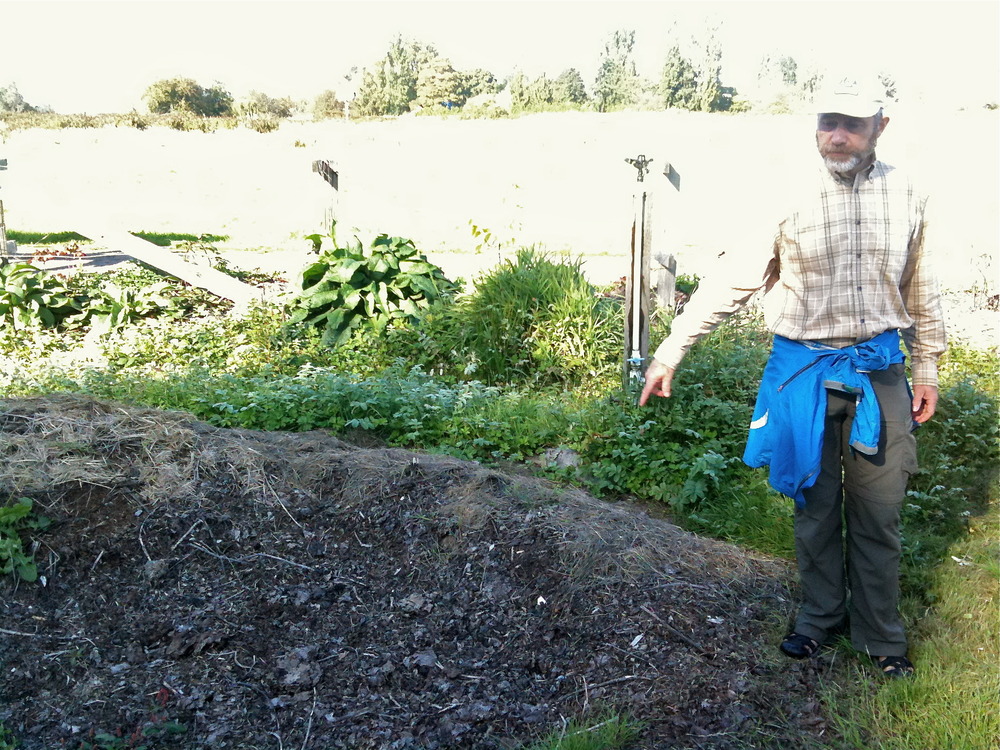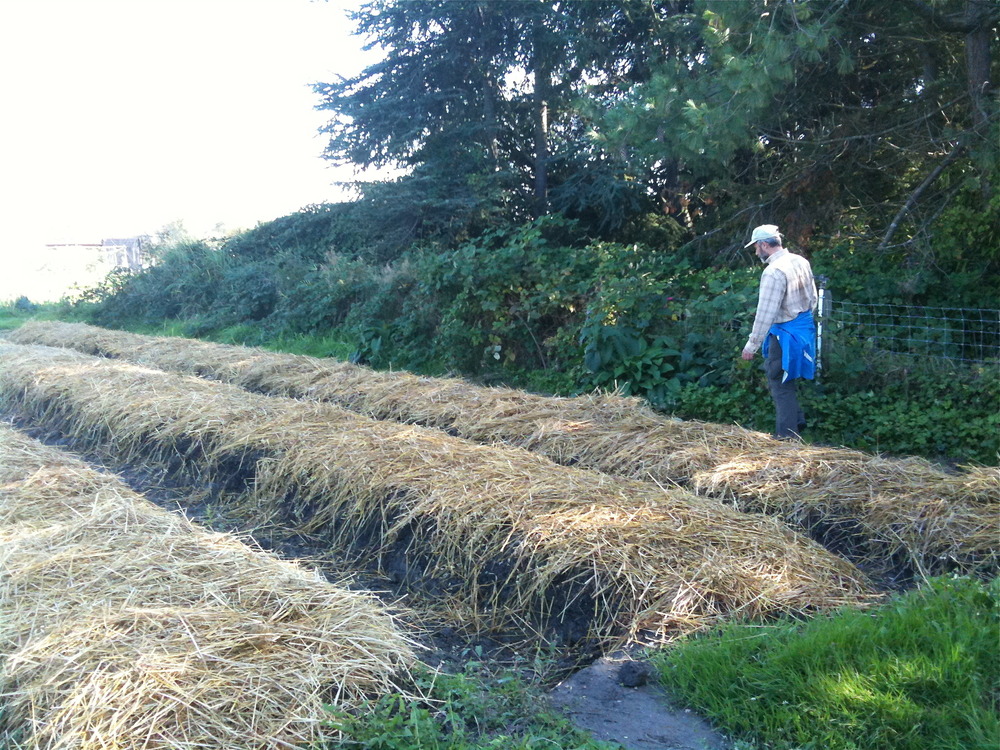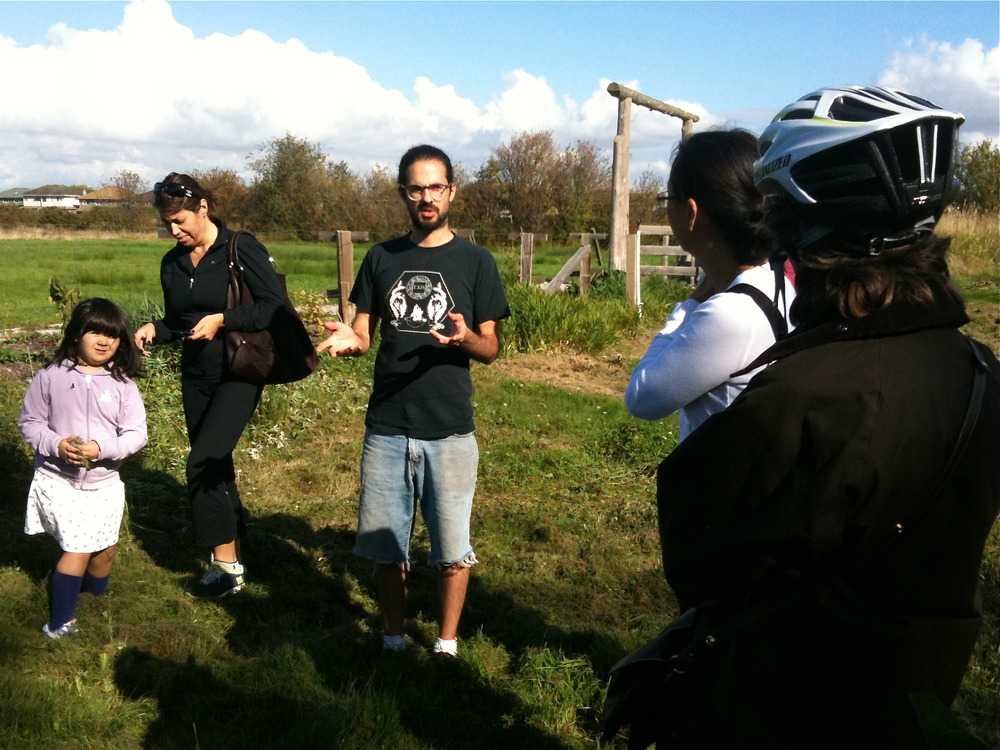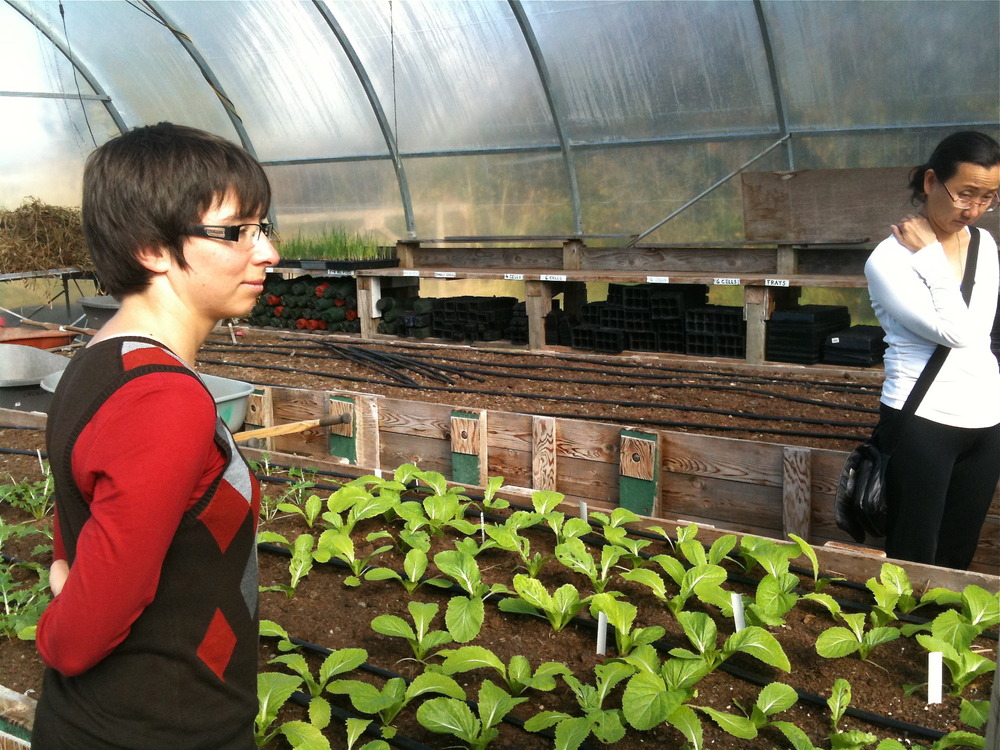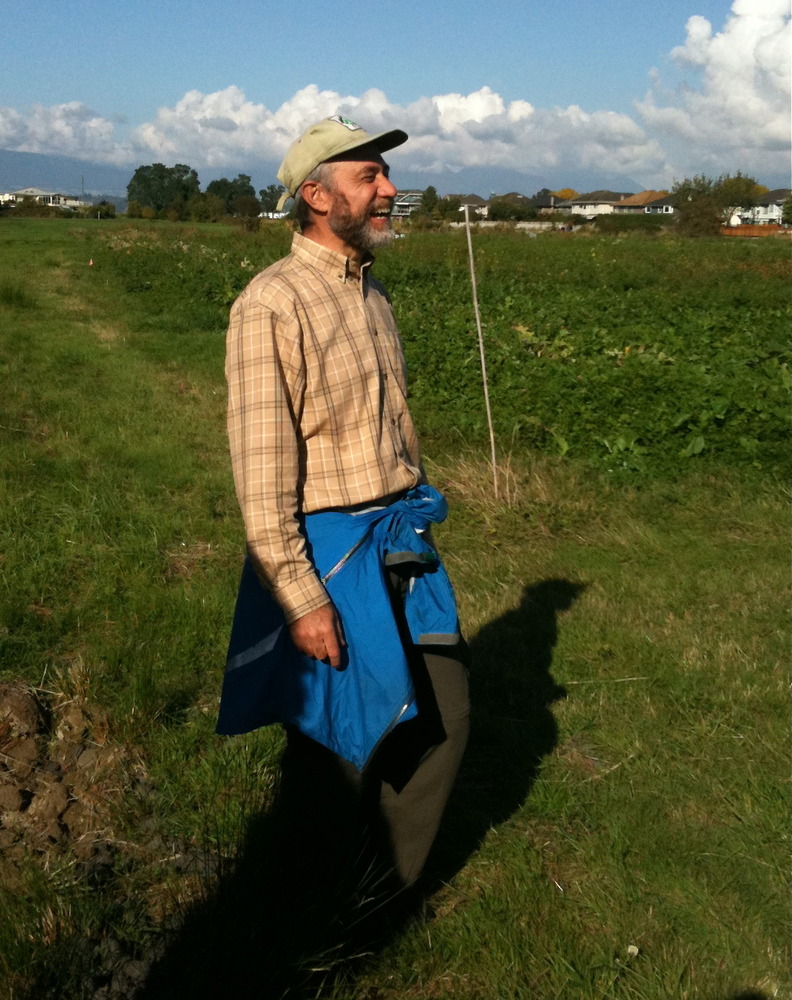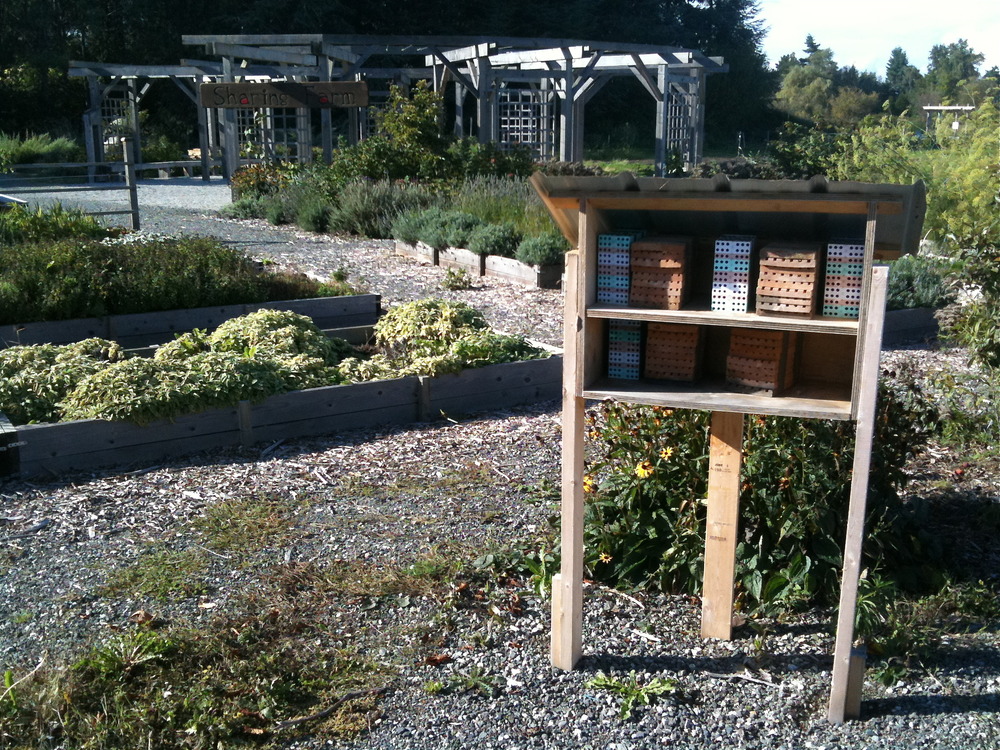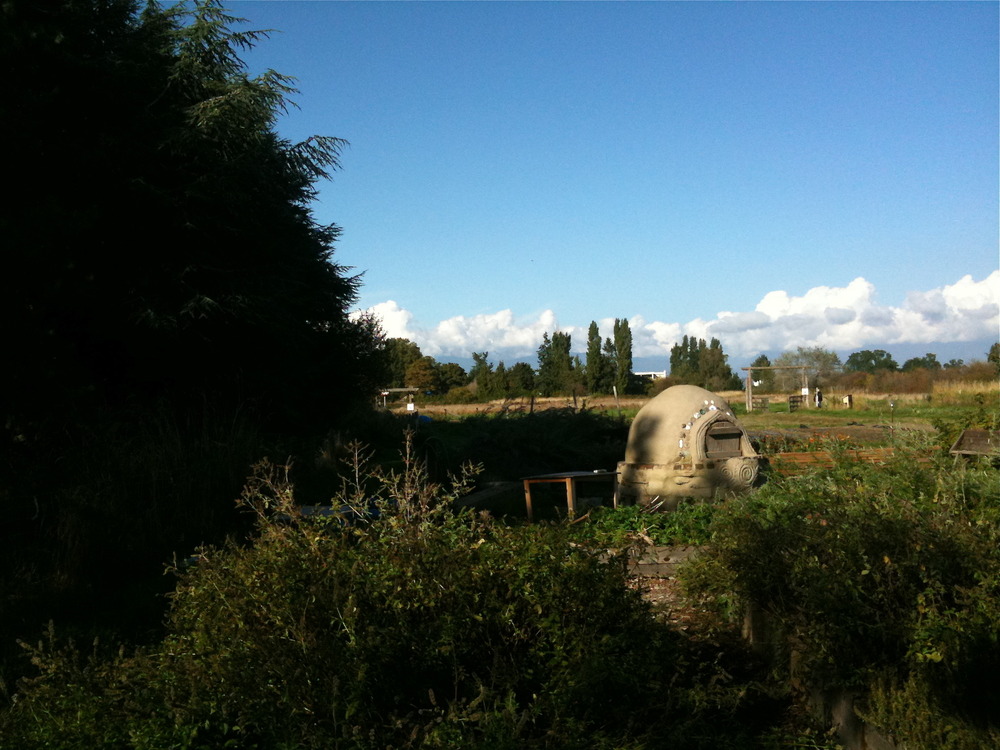{Photo of Chris from last summer in our garlic, peas & bean bed. OMG, I can’t wait till it’s that warm again.)
This weekend, Chris M and I attended the February session of a new, year-long, food growing course in Maple Ridge. Taught by master organic gardener Gail Szostek (article of a course she taught last year here), the classes take place over an entire year so that gardeners can learn about food gardening from the preparing to the growing to the harvesting and eating. Every month features a new topic that will fit the season.February’s topic was Seeds & Scheduling. The class was great and I’m really glad I went. I learned new things, enjoyed the social atmosphere and got very motivated to start planning my garden beds carefully. Included in the session were lessons about vegetable plant types (legumes, greens, solanums, brassica, roots, cucurbits and alliums), a how-to on deciphering information in seed catalogues and a lot of discussion about crop rotation. We each drew up a map of our own garden spaces and started drawing in a planting plan and timeline according to crop rotation rules.
Crop rotation is the act of rotating annual plant varieties from one bed to another every year (instead of, for example, planting garlic in the same space year after year). This is very beneficial because it helps keep diseases and pests away that will make homes in spaces that remain unchanged year after year. It also helps return important nutrients to the soil. Monocrop farming (planting the same things in the same space year after year) leeches essential nutrients out of the land and never replaces them, whereas crop rotation allows those nutrients to be replaced. (A simple example: beans are great at putting nitrogen into soil. Therefore, including bean plants in a bed’s rotation schedule that also includes nitrogen-hungry plants like corn means that your soil’s nitrogen supply will continue to be replenished after the corn has gobbled it up). Practicing this is an important step to maintaining healthy soil year after year.
In class, we were taught the 4 rules of crop rotation:
- Root crops are not to follow potatoes
- Potatoes should not follow legumes
- Brassicas should follow legumes
- Root cropts should follow any crop with mulch
If you’re interested in incoporating crop rotation into your vegetable gardens, you should plan out what you want to plant where and also think about timing. Careful planning means that you can time your plantings so that you are getting multiple plant varieties out of one bed in a year (instead of just one variety a year). Here on the west coast, we have an opportunity to do spring plantings (for late spring/ early summer harvest), summer plantings (for late summer/ early fall harvest) and fall plantings for winter crops. That’s a lot of production from one bed if you plan well. And don’t forget about planting in cover crops during in-between stages. Cover crops (like crimson clover, fava beans and rye) help infuse important nutrients into the soil during gardening down time. Turn these crops right into your soil before they go to seed.
There’s a lot more information I could relay from my class notes, but for now I’ll just encourage you to do some internet searching if you want more info on crop rotation and recommend that you attend some of these Growing Food courses this year. If you can’t make it to all of them, you’re welcome to pay for classes individually and just attend the ones that fit your schedule and interest.
The classes are held on the 2nd Saturday of every month (unless otherwise specified) from 12/12:30 – 4/4:30 at the CEED Centre in Maple Ridge. I’ve listed the upcoming months and topics below, but to register or for more information, contact Gail at greenspaceconsulting@live.com.
The Curriculum:
- Jan – Sites and Soils
- Feb – Seeds and Scheduling
- Mar – Propagation and Spring Warmth
- Apr – Garden Structures
- May – Bed Prep and Planting
- Jun – Compost and Fertilizer
- Jul – Water, Teas, Brews
- Aug – Winter Gardening
- Sep – Harvesting and Seed Saving
- Oct – Preserving
- Nov – Winter Prep
- Dec – Christmas Party and Wrap-up
